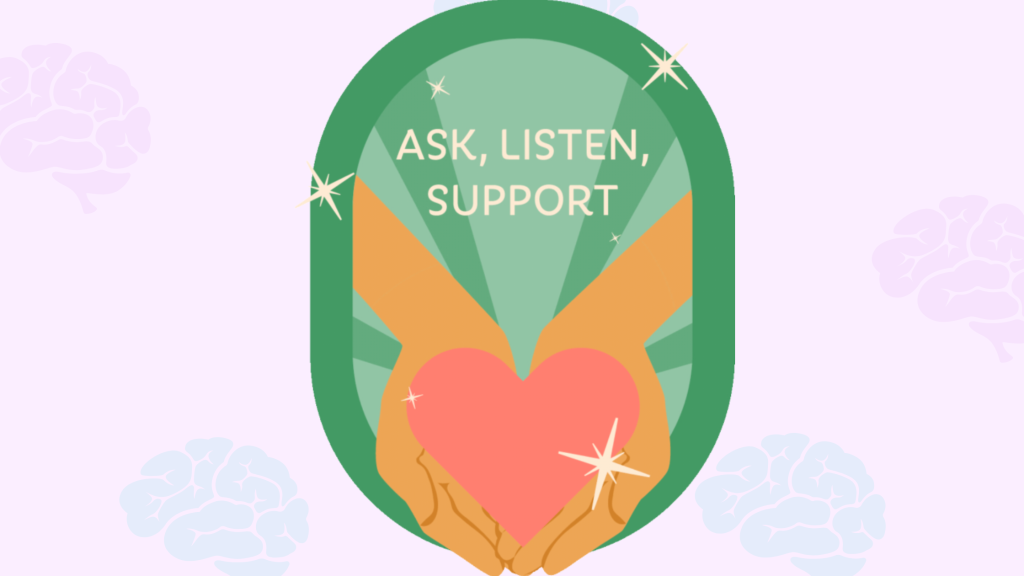You Are Not Alone: Preventing Youth Suicide Together

Suicide is preventable. Awareness, honest conversations, and connection can save lives. At Tri-Town Youth Services, we’re here to educate, support, and stand beside youth, families, and community members. Together, we can learn how to recognize the warning signs, reduce stigma, and reach out when someone is struggling.
The Reality We Can't Ignore
The numbers are heartbreaking, but they can change.
Suicide is the 2nd Leading Cause of Death
among youth and young adults ages 10-24
400 lives lost
each year
in Connecticut from suicide
20 youth between ages
10-18
died from suicide in 2024
1 in 5 teens
has seriously considered suicide
40% of LGBTQ+ youth
have thought about suicide
Each of these statistics
represents a child, classmate, or friend.
These aren’t just numbers. They’re reminders that even when life looks fine on the outside, young people can be carrying deep pain on the inside. Every one of us, parents, teachers, peers, neighbors, has the power to notice, to listen, and to help change the story.
Warning Signs of Suicide

Verbal Signs

Behavioral Signs

Emotional Signs
- Expressing hopelessness (“I can’t take this anymore,” “I just want to disappear”)
- Talking about being a burden to others
- Describing unbearable emotional or physical pain
- Mentioning wanting to die or not be alive
- Withdrawing from friends, family, or activities
- Giving away possessions or saying goodbye
- Increased use of alcohol or drugs
- Reckless behavior or taking dangerous risks
- Unexplained aggression, agitation, or extreme mood swings
- Persistent sadness, anxiety, or depression
- Sudden calmness after deep distress
- Feeling trapped or like there is no way out
Myths vs Facts
Myth: People who talk about suicide are just seeking attention.
Fact: Talking about suicide is a warning sign. It should always be taken seriously
Myth: Asking someone if they are suicidal will put the idea in their head.
Fact: Asking directly about suicide can reduce risk and provide an opportunity to help.
Myth: Suicide happens suddenly, without warning.
Fact: Most people show warning signs before attempting suicide.
Myth: Only people with diagnosed mental illnesses die by suicide.
Fact: While mental health conditions increase risk, life stressors, trauma, and loss can also contribute.
Myth: Once a person decides to die by suicide, nothing can stop them.
Fact: Intervention works. Many who receive support go on to live fulfilling lives.
What to Say & What Not to Say
It can be hard to know what to say when someone is struggling. Here are a few helpful and harmful phrases:

“I’m here for you, and I care about you.”
“You are not alone. Let’s find support together.”
“You don’t have to go through this alone.”
“I believe you, and I want to help.”

“You’re overreacting.” (Minimizes their feelings)
“Just be positive.” (Dismisses their pain)
“Suicide is selfish.” (Shames them instead of helping)
“I know exactly how you feel.” (Each experience is unique)
Prevention Strategies
Suicide prevention requires awareness, community involvement, and open conversations. Here’s how we can help reduce suicide risk:
1. Create a Safe and Supportive Environment
Encourage open conversations about mental health.
Reduce access to lethal means (e.g., safe firearm storage, limiting medication access).
Promote social connectedness through support groups and school involvement.
2. Recognize the Signs & Reach Out
Notice behavioral and emotional changes.
If concerned, ask directly: “Are you thinking about suicide?”
Listen without judgment and offer support.
3. Promote Mental Health Resources
Encourage professional help, such as therapy or crisis counseling.
Share helpline numbers, such as 988 or Crisis Text Line (Text HOME to 741741).
What To Do If Someone is Suicidal
If someone is in immediate danger, do not leave them alone and take the following steps:
Stay Calm & Present – Listen and acknowledge their pain.
Ask Directly – “Are you thinking about suicide?”
Ensure Safety – Remove any harmful objects.
Get Help – Call 911, 988 or take them to an emergency room.
Encourage Professional Support – Connect them with a mental health professional.
If it is not an immediate crisis but you are still concerned, encourage them to reach out to a trusted adult, counselor, or mental health provider.
You Are Not Alone. Help Is Available.
Suicide is preventable, and together, we can break the stigma and support youth in crisis. If you or someone you know is struggling, reach out today!
If you or someone you know needs support, please reach out.
In Connecticut: Crisis Services for Youth Dial 211
Visit: CT Suicide Prevention | Connecticut Suicide Advisory Board
National Crisis Lines and Additional Information:



